How to taste extra virgin olive oil
Tiziano is a true olive expert. Not only did he bring the once-abandoned Aleandri grove back to life with his champion olive tree pruning technique, but he is also a professional extra virgin olive oil taster.
We visited Tiziano at his Le Marche grove where he showed us the interesting technique used to taste extra virgin olive oil when judging its quality and key things to look out for.
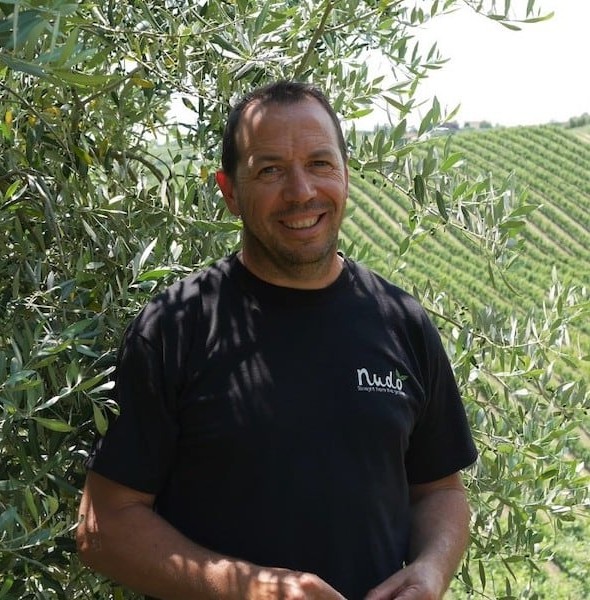
Warm crusty bread is a delicious way to enjoy extra virgin olive oil, but if you want to know how to taste olive oil like a pro, you should use the technique called ‘stripping’. All fresh, quality extra virgin olive oil has three key characteristics: a grassy smell, a bitter note, and a peppery kick. While the intensity of these varies between varieties and harvest years, these are the key aspects of fresh, quality extra virgin olive oil. Using stripping to taste your olive oil is the best technique to identify these three olive oil characteristics and really be able to taste the quality and properties of your extra virgin olive oil.
PREPARATION
The official cups to use for tasting extra virgin olive oil are these small blue glasses. While they aren’t crucial to the technique, they do have a purpose. Despite common misconception, the one aspect that does not have an impact on the quality of extra virgin olive oil is the colour. The point of these glasses is to dull the visual sense so that this doesn’t influence the judging. When tasting your oil with this method at home, in lieu of blue cups use a small glass or a wine glass, just keep that point in mind and focus on your sense of smell and taste only.
See Tiziano using this technique below.
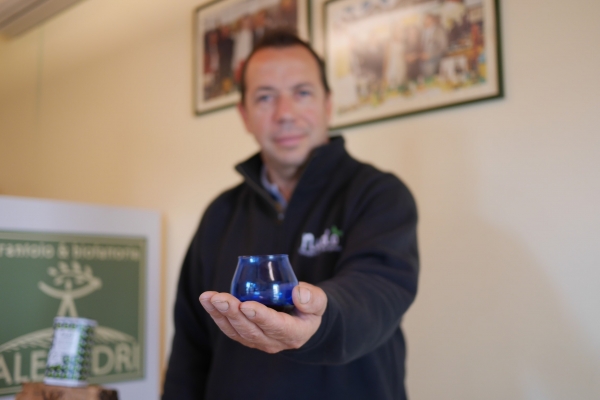
Warm & Swirl
Put a little extra virgin olive oil in the glass and place the base of it in the palm of your hand with the other hand covering the top. The warmth of your palm will warm the oil helping to release the aromas and after a few moments, you will be ready to smell the oil.
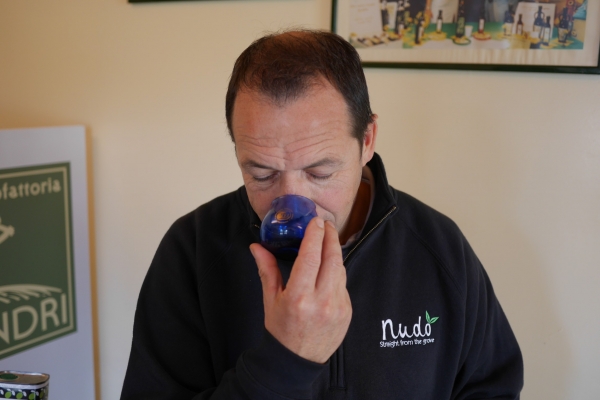
Breathe & Smell
Lift your top hand and take a deep breath into the glass and take in the scents of the oil. The smell should remind you of the scent of fresh grass, this is the smell of the fruit on the olive tree. Tiziano says, “The description is often grassy but when you really get down to it it’s the smell of fresh olives”. You may also pick up other subtleties of the variety, such as artichokes, green tomatoes, or almonds.
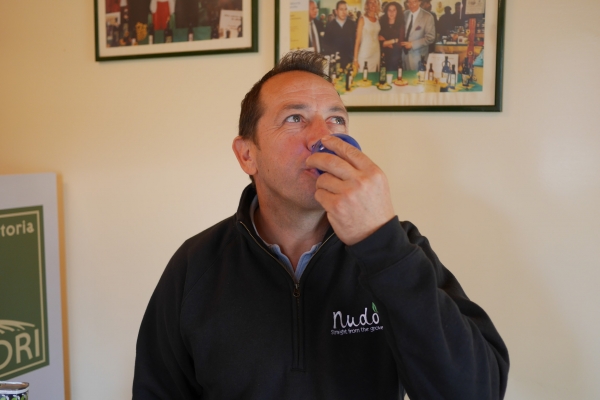
Sip & Strip
The next step is to taste the oil, and you do this with the stripping technique. The tongue is a receptor, the tip perceives the sweet, the sides the bitter, and the back the spicy; the aim of stripping it to cover all of these to get a true taste of the oil.
Take a small sip of the oil and hold it in your mouth, then put your tongue against the inside of your teeth and draw some quick breaths through your teeth making a sort of ‘shhh’ sound. This will draw the oil across the tongue and to the back of the throat, across the different taste receptors allowing you to taste the different flavour aspects: sweet, salty, bitter, and spicy.
TASTE TEST
The two key tastes of extra virgin olive oil should be bitter and spicy. Extra virgin olive oil is a natural product, so these characteristics simply relate to the olive fruit it comes from. The first flavour you will taste is bitterness which is the natural flavour of fresh, raw olives. This bitterness will then soften and then will come the spiciness in your throat. This peppery kick is the antioxidant polyphenols, one of the things that make extra virgin olive oil so good for you. You should not taste sweet in extra virgin olive oil as there are no natural sugars in it, so if you do it is likely old or not extra virgin.
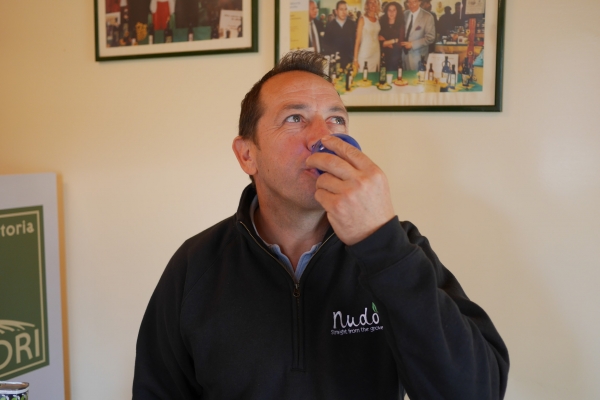
Voila! You now know how to taste extra virgin olive oil like an expert.
To get a sense of the differences in tastes between cultivars and regions in your olive tree adoption oils, use this technique to compare them and see what flavour variations you can pick up. When doing this or comparing other oils, a little tip from Tiziano is to have a piece of apple between tastings the different oils. This will cleanse the palette and help to keep your tasting judgements objective.
